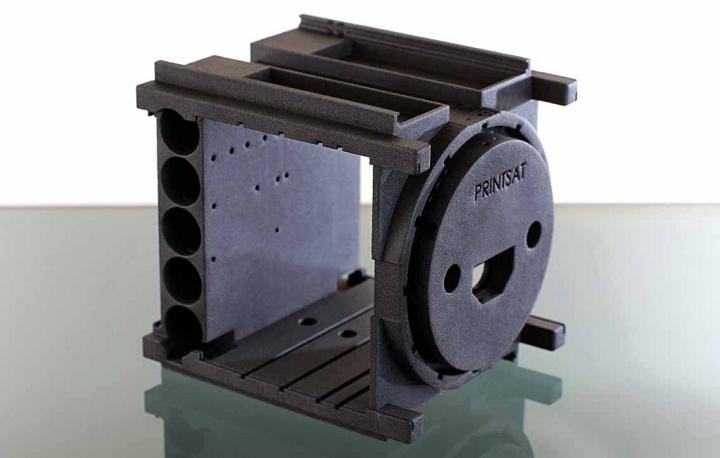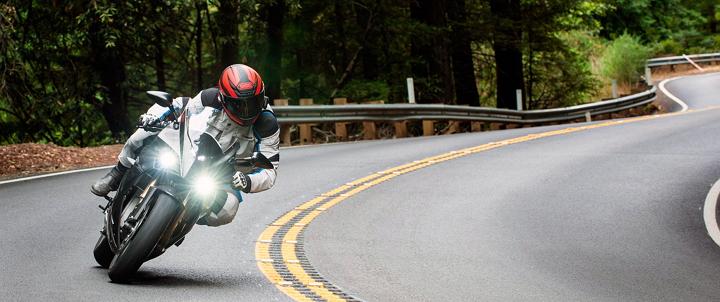Additive manufacturing and proprietary Windform materials were used to build a number of parts of the Cubesat KySat-2 which was launched into orbit as part of a NASA mission out of Wallops Flight Facility.
CRP USA says their Windform materials are ideal to stretch the limits of SLS applications, and they say the fact that Kentucky Space Center, the University of Kentucky, and Morehead State University used the material for end-use parts proves the point.
KySat-2 is the second satellite to be completely designed, built, and tested by students of the University of Kentucky and Morehead University, and the development process for the satellite began in 2011. The KySat-2 featured a 5 megapixel digital camera, a temperature sensor, a 3-axis MEMS rate gyroscope, a 3-axis magnetometer, and a stellar gyroscope. The satellite used RF signals to communicate with a ground station, to receive commands and to transmit data and photos to earth.
Primarily a “proof of concept” device, the KySat-2 was built to demonstrate key technologies like a distributed network computing architecture, power and radio systems, and the “stellar gyroscope” which provided guidance and determined attitudes for the spacecraft.
The CRP process uses high-precision CNC machining and 3D printing technology combined with Windform laser sintering materials to create models of everything from high-tech motorcycles to the Livrea Yacht Italia day-sailer.
CRP says they’ve been key technology partners on several case studies in aerospace, entertainment, motorsports, automotive, and design applications. The company makes use of a customized 3D Systems Vanguard printer – with 100 W laser power, intelligent thermal monitoring, and the latest temperature sensors – to build fully functional parts and bench testing prototypes.
Windform, a reinforced polyamide, was also used to make the Italian electric superbike, Energica.
CRP USA, based in North Carolina, manufactures on-car and wind tunnel components for racing teams.
The CubeSat KySat-2 was launched as part of the NASA ElaNa IV mission, and it included several 3D printed components made with Windform XT 2.0. Parts were printed for the mounting hardware for a camera system, extensions for separation switches, clips to hold the antennas in a stowed position, and a critical mounting bracket for on-board batteries to power the Cubesat.
The company says keys to their process are that there are no design limitations imposed by Windform materials, production and prototypes with undercuts, complex features and internal cavities can be easily produced, the process itself reduces product cycle times and that Windform parts can be plated or painted as needed.
Windform 3D printed parts can also undergo CNC machining, and when they are, it’s possible to bring finish tolerances down to the hundredths of a millimeter in 5-axis milling centers.
Subscribe to Our Email Newsletter
Stay up-to-date on all the latest news from the 3D printing industry and receive information and offers from third party vendors.
Print Services
Upload your 3D Models and get them printed quickly and efficiently.
You May Also Like
Reinventing Reindustrialization: Why NAVWAR Project Manager Spencer Koroly Invented a Made-in-America 3D Printer
It has become virtually impossible to regularly follow additive manufacturing (AM) industry news and not stumble across the term “defense industrial base” (DIB), a concept encompassing all the many diverse...
Inside The Barnes Global Advisors’ Vision for a Stronger AM Ecosystem
As additive manufacturing (AM) continues to revolutionize the industrial landscape, Pittsburgh-based consultancy The Barnes Global Advisors (TBGA) is helping shape what that future looks like. As the largest independent AM...
Ruggedized: How USMC Innovation Officer Matt Pine Navigates 3D Printing in the Military
Disclaimer: Matt Pine’s views are not the views of the Department of Defense nor the U.S. Marine Corps Throughout this decade thus far, the military’s adoption of additive manufacturing (AM)...
U.S. Congress Calls Out 3D Printing in Proposal for Commercial Reserve Manufacturing Network
Last week, the U.S. House of Representatives’ Appropriations Committee moved the FY 2026 defense bill forward to the House floor. Included in the legislation is a $131 million proposal for...



































